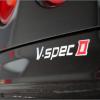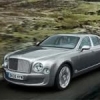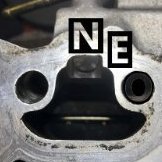What Is Stock Gtr Boost?
Announcements
-
Similar Content
-
Latest Posts
-
By Neostead2000 · Posted
Still not a guarantee fix. I used a high quality butyl-mastiq (the black goo that's not really silicone nor polyurethane, same stuff they use from the factory that just spreads out like melty cheese), and I still get lots of water on both sides of the trunk when raining or washing the car. I also suspect the factory spoiler rubber gasket might not be sealing well, so I'm thinking of adding a thin layer of grey silicone around the bolt holes on both sides and see if that's where it also leaks from. The biggest issue is that these cars don't come with a drain hole on each side like other coupes and hatchbacks. -
I hate it, but maybe he could paint it Monster jam style and call it...godzilla?
-
Would seem to me to be appropriate to go GTR style bar. There are options with and without N1 vent holes, with the GTR lower lip integral (because FG copy). https://justjap.com/search?q=r32 bumper
-
I noticed, a lot of these interior panels like the a/c unit and the head unit surround, don't necessarily need to be painted as when you remove the sticky shit it looks decent lol
-
Skyline Spares in Sydney area have one in stock. Dunno if you'd want to pay $1.5k for it though https://skylinespares.com.au/product/nissan-skyline-r32-gts-gtst-m-spec-front-bumper-bar/
-





Recommended Posts
Create an account or sign in to comment
You need to be a member in order to leave a comment
Create an account
Sign up for a new account in our community. It's easy!
Register a new accountSign in
Already have an account? Sign in here.
Sign In Now